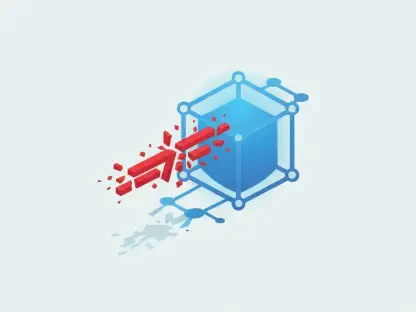In the rapidly transforming world of cybersecurity, the traditional mode of merely cataloging IT assets is on the brink of obsolescence. As digitalization accelerates, cloud adoption flourishes, and remote work becomes the norm, the sheer volume and diversity of digital assets are exponentially increasing. This has led to a cybersecurity paradox: despite organizations investing in state-of-the-art security tools, vulnerabilities continue to mount, largely due to an expanded attack surface. The digital transformation wave has contributed to an uneven asset landscape that includes isolated cloud instances and unmanaged employee accounts. The focus is now shifting from static inventories to actionable intelligence—a concept that promises a more nuanced and effective approach to managing these security challenges.
The Pitfalls of Traditional Cybersecurity
Traditional cybersecurity models often rely on static tools like Configuration Management Databases (CMDBs) and spreadsheets, which are ill-equipped to handle the dynamism of today’s IT environments. These methods provide a fragmented and incomplete picture of an organization’s assets, presenting risks such as invisible inactive accounts with potential overprivileged access. Such gaps can lead to security breaches and operational inefficiencies. The unmanageable vastness of disconnected data—from endpoint security tools to vulnerability scanners—only adds to the complexity, leaving organizations struggling to piece together the broader cybersecurity puzzle. Additionally, this segmented approach makes it difficult to achieve a coherent strategy for incident management, as decisions are made based on isolated datasets rather than an integrated overview of threats and vulnerabilities.
This complexity underscores the importance of actionability. Instead of merely collecting data, there is a growing recognition that comprehending and acting on this data is indispensable. The emphasis is shifting toward real-time asset visibility, which can only be achieved by embracing more dynamic and intelligent methods. Organizations must move from static asset lists to creating a proactive system that understands and leverages data to make informed decisions quickly. The goal is no longer to amass data but to harness it into actionable insights that bolster security measures.
Moving Towards a Holistic Approach
A unified view of IT assets is essential for bridging the traditional and modern needs of cybersecurity. Enterprises are finding that integrating diverse systems into a single, cohesive model can unlock more sophisticated security capabilities. This integration entails creating a dynamic map of a company’s entire technology footprint—one that goes beyond static inventories to emphasize real-time monitoring and response. By doing so, organizations can effectively bridge the gap between various data silos and consolidate their cybersecurity posture into one that is far more robust and adaptable.
This requires a shift in perspective from data collection to data-driven action. By aggregating and correlating data from various sources, businesses can transition from simple asset discovery to a more advanced phase of asset intelligence. This shift addresses the so-called “silo problem,” presenting an enhanced security narrative that guides more effective and prioritized responses. Such a method supports comprehensive asset lifecycle management across myriad platforms, from cloud environments to SaaS applications, ensuring that security measures are consistently updated in line with evolving threats and vulnerabilities.
By redefining how assets are managed, this new approach tackles “asset anarchy,” where unmanaged and outdated systems proliferate within IT ecosystems. Integrating these systems is key to achieving not only clarity but also operational efficiency, ensuring that every asset within an organization’s infrastructure is accounted for and actively monitored. As this unified intelligence consolidates, organizations find themselves better prepared to address potential security gaps and mitigate risks preemptively.
The Rise of Actionable Security Practices
Incorporating actionability into cybersecurity practices represents a shift towards a more proactive security posture. This is fundamental in preemptively managing threats and vulnerabilities associated with diverse assets. By embedding this principle within asset management, companies can anticipate potential threats, minimizing risks in real-time. This strategic approach allows organizations to address risks related to unauthorized or unsupervised asset usage effectively, thereby dynamically reducing their overall security exposure.
The significance of this shift is highlighted through case studies. For instance, an Indonesian bank transformed its asset management capabilities across numerous branches by utilizing a cohesive asset management platform. By adopting comprehensive solutions, it established a unified, adaptive inventory system, enhancing both security maturity and compliance. These steps underscore the potential benefits of actionability, providing a blueprint for others seeking similar advancements.
Organizations that acknowledge the value of this transformation will have superior tools to maintain their security stances effectively. They will be able to address threats efficiently and with greater foresight, ensuring their security measures evolve alongside emerging cyber threats. A consistent transition toward such practices means embracing innovations that not only manage assets more effectively but also pivot strategies as new threats materialize.
Embracing Actionability as a Future Imperative
Traditional cybersecurity frameworks often depend on static tools such as Configuration Management Databases (CMDBs) and spreadsheets. These tools are not designed to cope with the fast-changing nature of modern IT environments, resulting in an incomplete and fragmented view of an organization’s assets. This inadequacy opens the door to risks, like undetected inactive accounts that might have excessive access privileges, potentially leading to security breaches and inefficiencies. The sheer volume of disconnected data—from endpoint security systems to vulnerability scanners—adds layers of complexity, challenging organizations to assemble the larger cybersecurity picture. Furthermore, this piece-by-piece method makes it difficult to form a unified strategy for incident management, as decisions are based on isolated data rather than a comprehensive view of threats and vulnerabilities.
This situation stresses the importance of creating actionable insights. Organizations are moving beyond data collection to understanding and acting on this data, focusing on real-time asset visibility through dynamic and intelligent systems. The goal has shifted from just accumulating data to transforming it into actionable insights that enhance security efforts.









